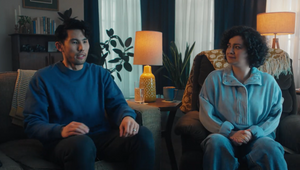
Customer Loyalty in the Time of Covid-19

Customer loyalty is often defined as the generation of enough confidence in a brand that consumers are loyal enough to consistently choose that brand over a competitor. But what happens when a global pandemic enters the equation?
As the world changes before our very eyes and consumer behaviour shifts with it, marketers everywhere are navigating the same unchartered waters and asking the same question: How do brands build (or re-build) customer loyalty during and after Covid-19?
The simple answer is that there is no playbook that can give us the direction needed to build customer loyalty during or after a global pandemic.
Today the world finds itself facing the ramifications of Covid-19 nearly 102 years after the start of The Spanish Flu – the last recorded global pandemic. With restrictions slowly lifting here in Canada, marketers have access to consumers again to re-ignite brand passion. But while consumers may have a renewed desire to purchase and interact with their favourite brands, some things have changed.
From the onset of the pandemic until our current recovery mode status, consumer mindsets, shopper confidence and buying patterns have shifted and will continue to do so. As marketers we have a new challenge ahead of us in re-gaining, retaining, and maintaining customer loyalty among a changing consumer base.
As marketers, we’ve been tasked with the responsibility of writing the 'Post-Pandemic Customer Loyalty Playbook'.
If we are going to write the playbook on building post-pandemic customer loyalty, then first we need a framework to follow. We have been given the interesting challenge and opportunity to observe the industry over the past few months and consider a few strategies for brand re-engagement. The playbook we build doesn’t have to be challenging. In fact, we can distill our actions down to three simple statements.
1. Understand that consumers are people
There has been a lot of focus on brand marketing with empathy and the need for honesty and transparency during these unprecedented times. While this is entirely true, if we 'peel back the onion' to understand why this strategy has gained so much traction, we’ll find that at the end of the day – consumers are people. It really is that simple. They’re people with physiological and safety needs, love and belonging needs, as they’re looking for esteem and self-actualisation.
To re-ignite customer loyalty, brands need to demonstrate humanity and humility during a time when people are feeling vulnerable. They need to make people smile by being empathetic to basic human needs. Whether through unique content creation, personalisation, or a digital touchless experience, marketers should connect with these basic human needs above all else in order to gain or regain trust, as the basis of any customer loyalty relationship.
2. Follow the people’s cues
If we thought we were already making strides in a Digital Age, then boy are we ever in the thick of it now!
People (remember these are consumers as we once knew them…) are shifting to primarily online behaviours. With a noticeable increase in social media interactions, email engagement, as well as an undeniable increase in use of messaging apps and online video conferencing tools, marketers have been thrust deeper into the Digital Age.
To connect with people, brands will need to leverage digital channels with highly personalised opportunities. Brands will need to leverage the strategy of relevant timing and triggered communications in order to provide a more meaningful relationship and respond to what is being cued as an immediate consumer need.
3. Analyze the people’s data shifts
All marketers now turn into data marketers.
Once brands have a sense of who their consumers are as people, and what digital cues they’re providing, through data analytics we can understanding the exact shift in engagement activity from pre-Covid until today. Marketers should analyse behavioural segments, demographic segments, sales funnel segments. The deltas uncovered can then be leveraged to understand where there are vulnerabilities and opportunities for brands to market accordingly.
Combined, this analysis of past and current behaviour, aligned with digital cues and acknowledgement of basic needs lends itself to post-pandemic strategic recommendations that focus on the new consumer mindset and ensuring a continuation of brand loyalty with a potentially newly defined consumer.
We will write the easy and difficult playbook chapters.
There’s a palpable discomfort that comes along with the quick and radical interruption of daily life that we have all come to feel. Job security and financial well-being become key drivers of most decision-making processes. As such, relationships with brands are going to change as consumer needs and behaviours continuously shift.
There’s no denying this pandemic has changed us as consumers – and as people.
While researchers and scientists prepare for the next pandemic, brand marketers need to forge ahead and better understand that the consumer mindset is an ever-changing landscape that can shift and pivot without warning.
And so, we rely on our data to understand these shifts and to be the key to unlocking successful post-pandemic consumer loyalty.
Stay healthy. Stick with your beloved brands.















